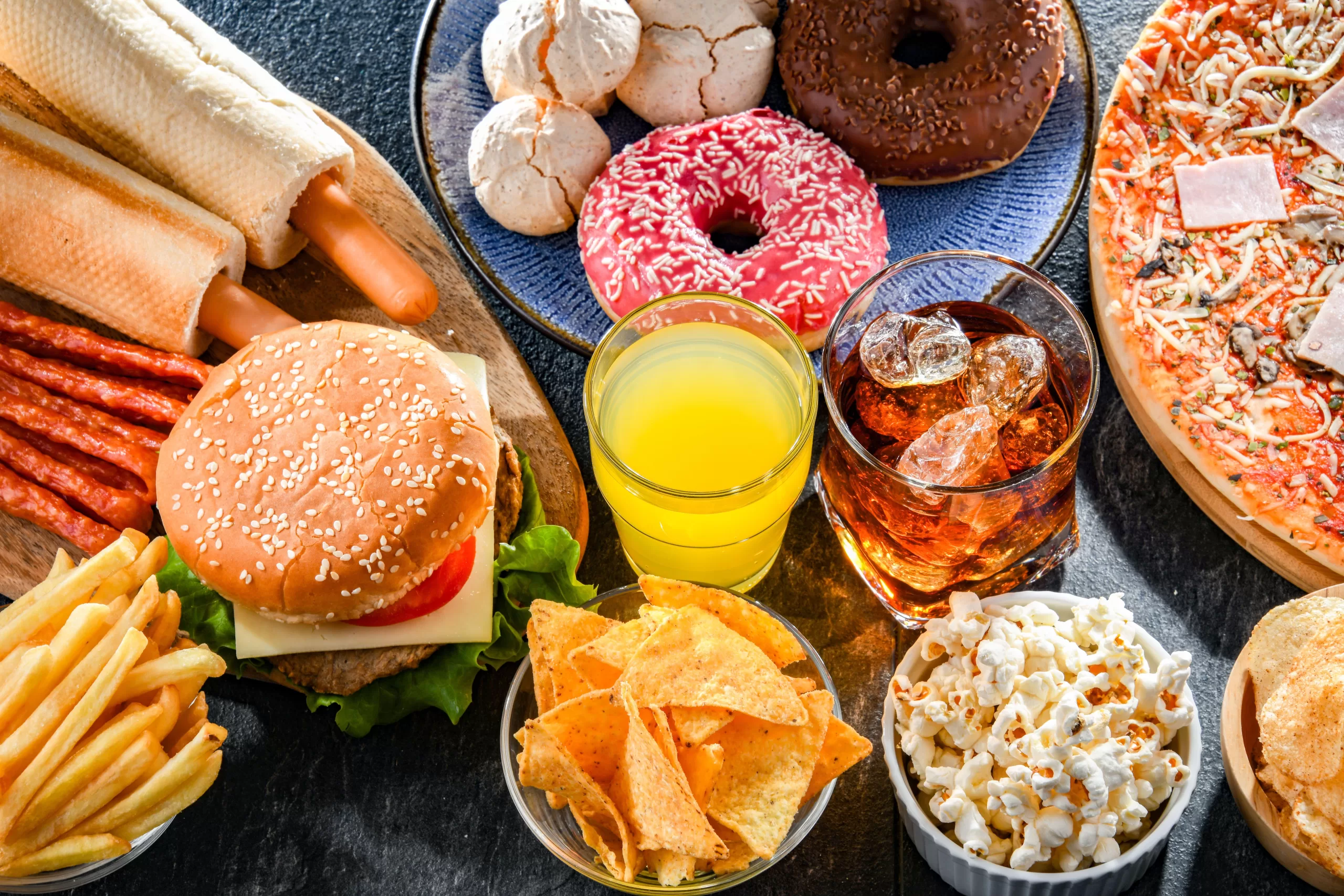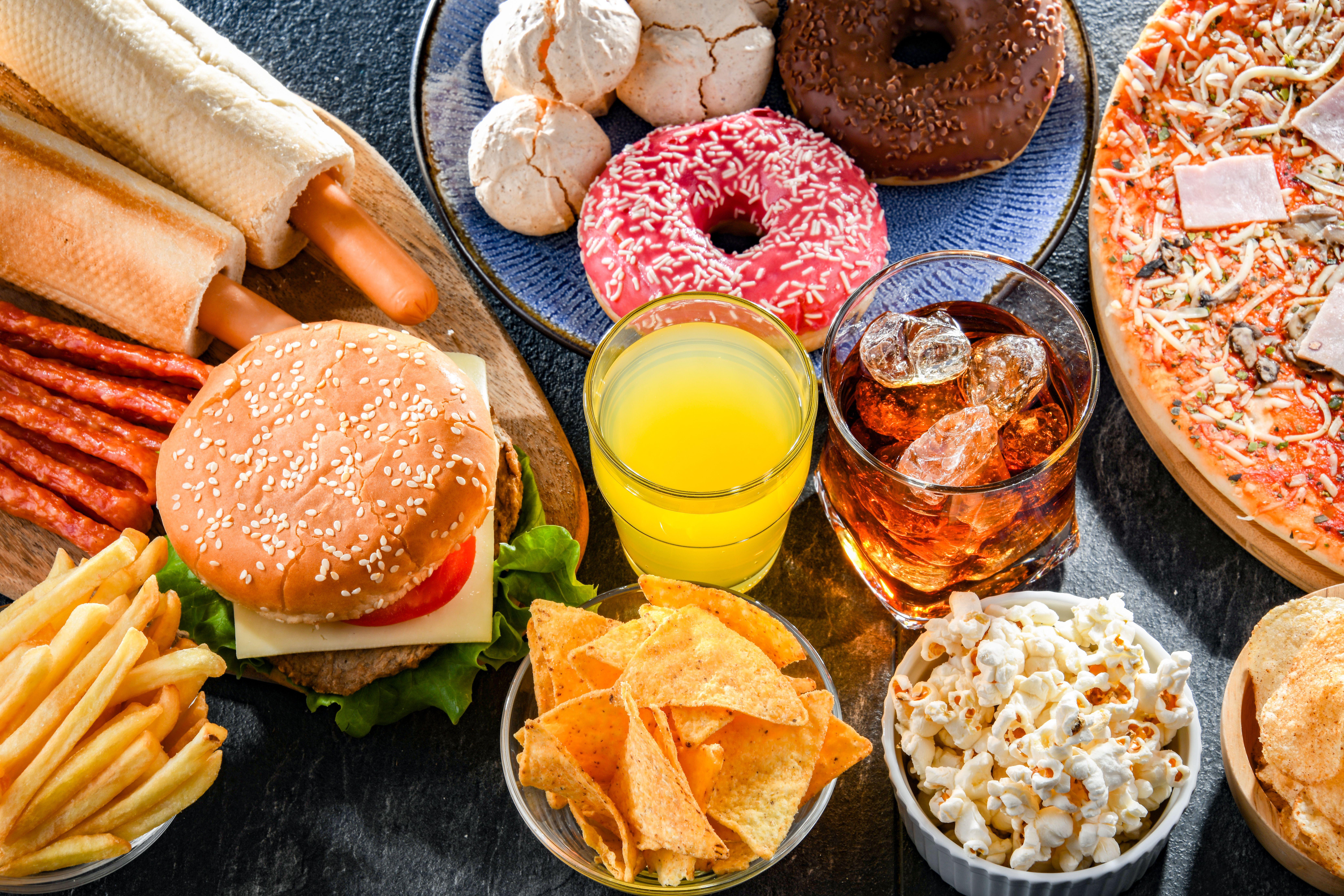TWO thirds of a British teenager’s diet is junk, according to a study.
Cambridge and Bristol university researchers estimate 66 per cent of calories come from fatty ultra-processed foods.
They analysed food diaries from 2,991 youngsters aged 11 to 18 between 2008 and 2019.
There was a small decline over the decade but packaged snacks and meals still made up a majority of their diets.
Study author Dr Yanaina Chavez-Ugalde, from Cambridge University, said: “It’s clear from our findings that ultra-processed foods make up the majority of adolescents’ diets.
“Their consumption is at a much higher level than is ideal, given their potential negative health impacts.
Read more on processed foods
“There is a growing body of evidence linking the consumption of UPF with poor dietary quality and diseases such as cardiovascular disease and cancer.”
Ultra-processed foods offer convenient and often cheap solutions but also poor nutritional value
Dr Esther van Sluijs
Ultra-processed foods are often high in fat and sugar and low in fibre, which raises the risk of weight gain.
They include tasty and convenient fizzy drinks, pre-packed snacks like crisps and biscuits, breakfast cereals and ready meals, the researchers said.
About a quarter of secondary school students are obese, compared to 15 per cent in 1995, official figures suggest.
The study, in the European Journal of Nutrition, said white teenagers and those in poorer areas ate more junk food.
Joint senior author Dr Esther van Sluijs said: “Ultra-processed foods offer convenient and often cheaper solutions to time- and income-poor families, but unfortunately many of these foods also offer poor nutritional value.
“This could be contributing to health inequalities.”
Ultra-processed foods have become the target of health campaigners as numerous studies warn of health damage.
A thirty-year study by Harvard University found that a diet containing too many raises the risk of an early death.
The research, published in the British Medical Journal in May, found those who ate the most UPFs had a 13 per cent higher risk.
Another, by Central Queensland University in Australia, claimed a highly processed diet raised the risk of 32 different illnesses.
These included cancers, anxiety, high blood pressure, obesity, type 2 diabetes and heart disease.
How ultra processed is YOUR kitchen?
Ultra processed foods (UPFs) were defined by Brazilian researchers who made the NOVA classification system. It breaks foods into groups depending on how processed they are. The most natural foods are in group 1, while the most processed are in group 4.
The groups do not entirely indicate how healthy a food is. However, it does indicate how processed it is – and studies have linked UPFs to a number of diseases.
How does your kitchen compare to the following groups?
Unprocessed or minimally processed foods (group 1)
- vegetables and fruits (fresh or frozen)
- dried fruits with no added sugar, honey, or oil
- grains and legumes (chickpeas, lentils)
- meat, poultry, fish, seafood, eggs
- milk without added sugar
- plain yogurt with no added sugar
- nuts and seeds
- spices and herbs
- tea, coffee, water
Processed culinary ingredients (group 2)
- iodized salt
- salted butter
- sugar and molasses from cane or beet
- honey extracted from combs
- syrup from maple trees
- vegetable oils crushed from olives or seeds
- butter and lard from milk and pork
- starches extracted from corn and other plants
- vegetable oils with added anti-oxidants
- vinegar with added preservatives
Processed foods (group 3)
- canned vegetables, fruits, and legumes
- fruits in syrup
- salted or sugared nuts and seeds
- salted cured or smoked meats
- canned fish
- artisanal breads and cheese
Ultra-processed foods (group 4)
- pop and fruit drinks
- sweetened yogurt
- sweet or savoury packaged snacks (e.g., cookies)
- candies and cake mixes
- mass-produced packaged breads and buns
- margarines and spreads
- breakfast cereals
- cereal and energy bars
- energy drinks
- instant soups, sauces, and noodles
- poultry and fish nuggets, hot dogs
- many ready-to-heat products: pre-prepared pies, pasta, and pizza dishes

